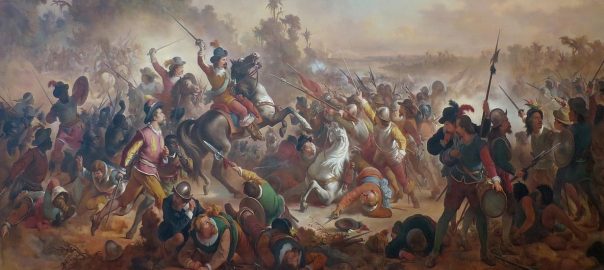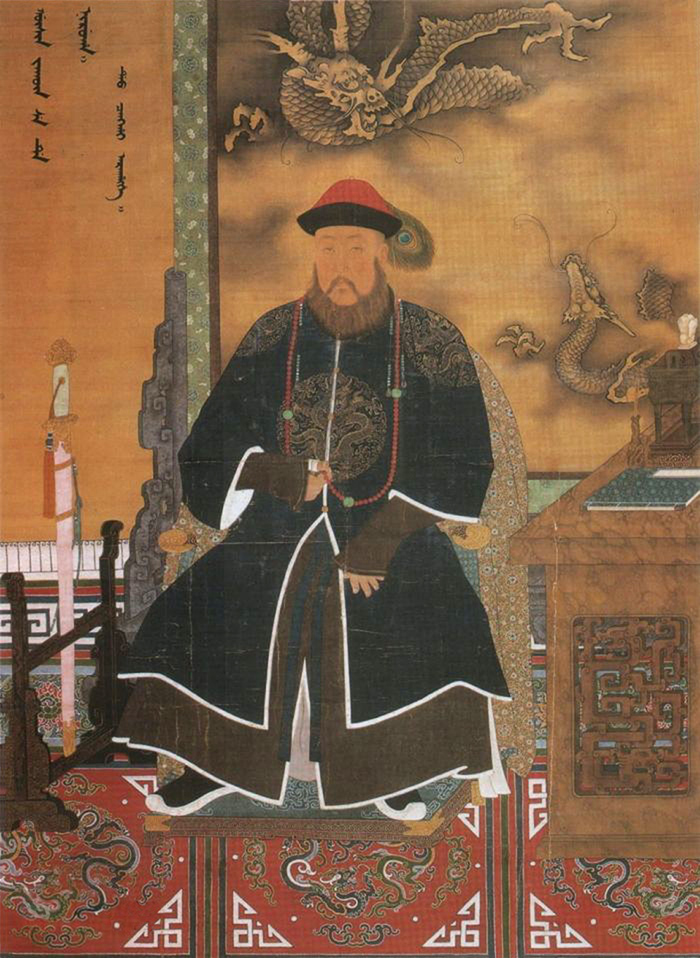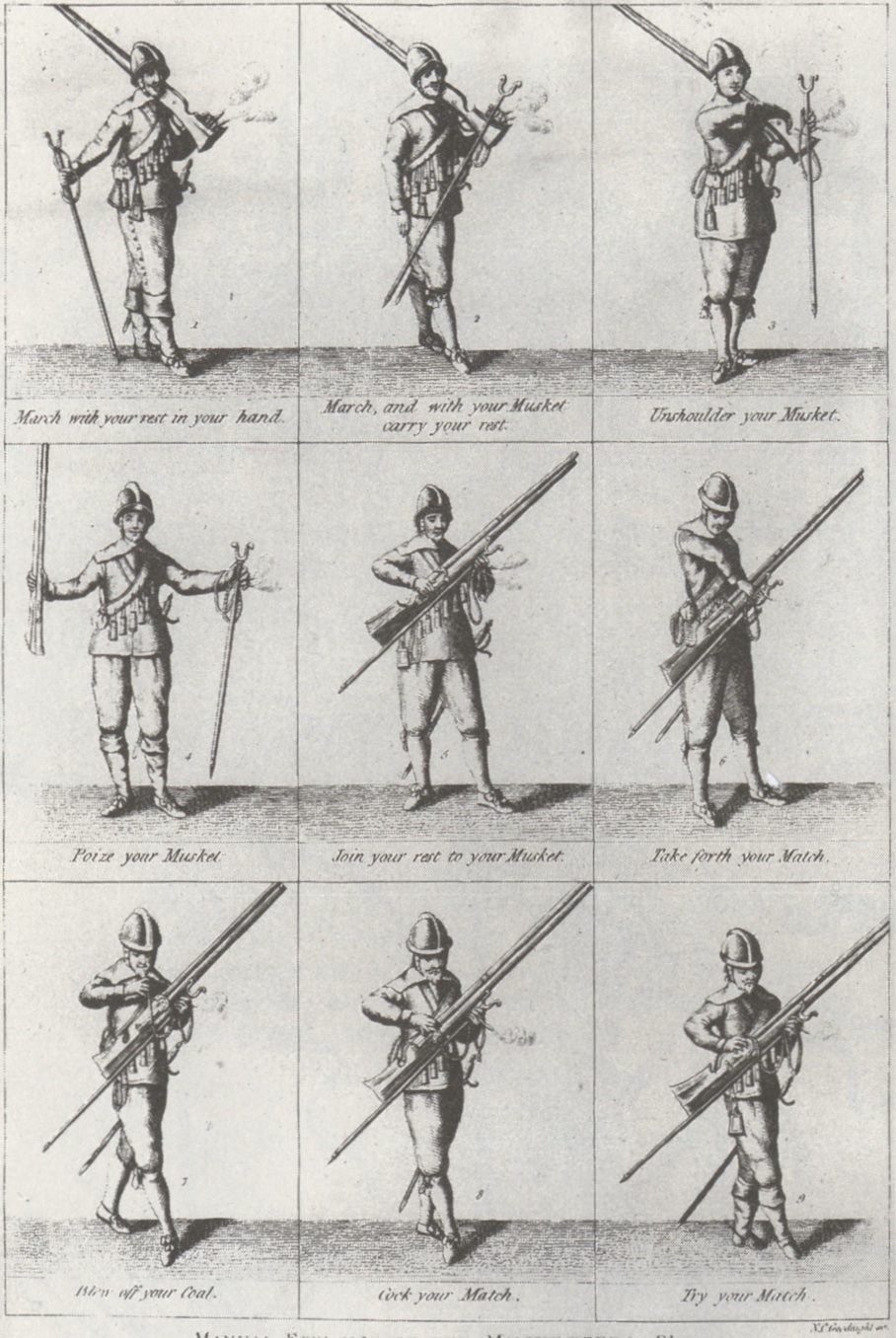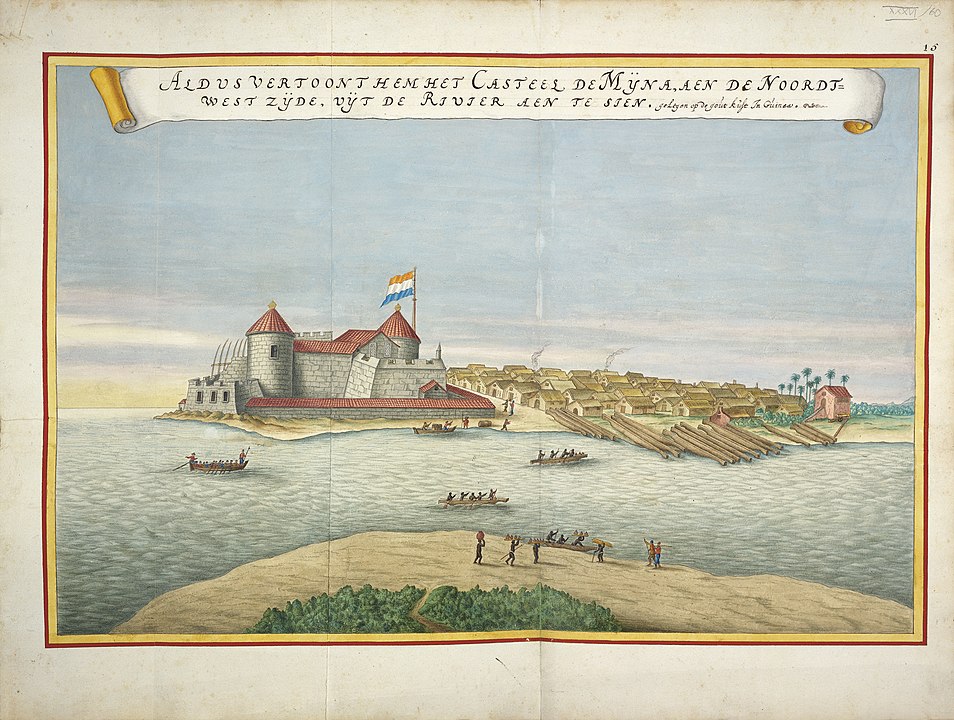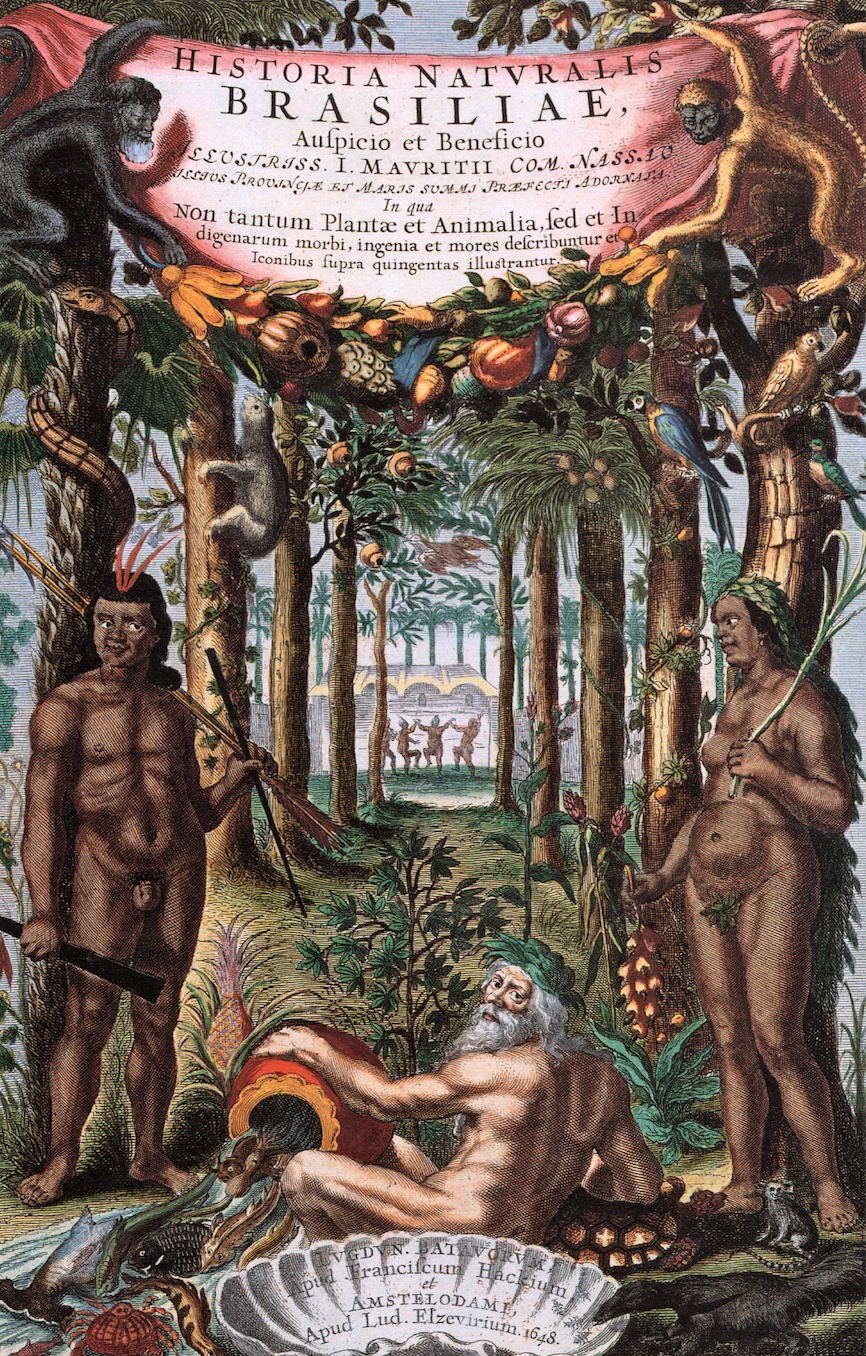The biggest geopolitical trend in 1645 CE was the push by independent Portugal to start recapturing the extensive portions of Brazil’s coast that had earlier been taken from them by the Dutch. But I retain my interest in the civil war in England which was already a globe-active power and whose colonial projects (including in Ireland!) were linked in many ways to the conflict at home… 1645 saw a significant development in that conflict. There were a few news items in Asia in 1645, too. So I’ll start with them, then go to England, then Brazil.
Asian news
- In July, Dorgon, the Prince Regent of the new Qing Dynasty, who required that people call him the “Imperial Uncle Prince Regent”, ruled that all adult male residents of the empire he now controlled fashion their hair in “Manchu” style, that is, they needed to to shave their forehead, and braid the rest of their hair into a queue. This WP page on Dorgon tells us that the discipline of the troops under his command as they entered Beijing in late 1644 had been very tight, making the transition smooth, and that one of his first acts was to re-establish the system of nationwide civil service examinations. The Shunzhi Emperor, his nephew, was still only six.
- On November 3, Luzon Island in the Spanish-ruled Philippines suffered a very severe earthquake. This WP page tells us that “An estimated number of 600 Spanish people were killed, and about 3,000 Spanish were injured.” But shockingly it makes ZERO mention of the casualties among non-Spanish. Some WP editor out there, please help correct that??
- On November 20, in distant Rome, Pope Innocent X (who wasn’t) raised the status of the premier, Dominican-run college in Spanish-ruled Philippines to that of a university. I guess it looked as if the Spanish were there to stay and the Pope was absolutely happy about that. (How long, I wonder, did it take any official news like that to travel through Spanish comms channels from Europe, to and then across “New Spain”– Mexico–and thence to the Philippines? Four or five months minimum?)
English Parliamentarians found their New Model Army
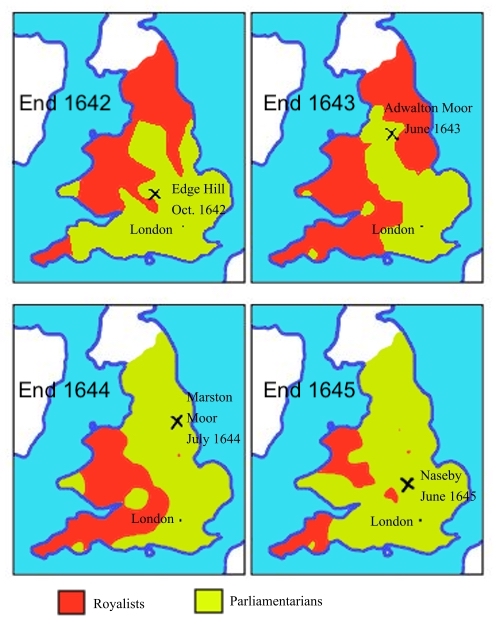
In the English civil war, things had been going better for the Parliament side in 1644 than in 1643, but from Parliament’s point of view things were still dragging on badly. In January 1645, Parliament established the New Model Army (not called that until quite a lot later.) Sir Thomas Fairfax was its Captain-General and Sir Philip Skippon was Sergeant-Major General of the Foot.
Shortly after the NMA was founded, Parliament passed the Self-Denying Ordinance, which required members of either house of parliament who were in the armed forces to relinquish one or the other of those positions. The WP page on the NMA tells us that:
Oliver Cromwell (who was the Member of Parliament for Cambridge) handed over his command of the Army’s cavalry when the Ordinance was enacted, [but] Fairfax requested his services when another officer (Colonel Bartholomew Vermuyden) wished to emigrate. Cromwell was commissioned Colonel of Vermuyden’s former regiment of horse, and was appointed Lieutenant General of the Horse in June. Cromwell and his son-in-law Henry Ireton (the New Model Army’s Commissary General, or second in command of the cavalry) were two of the only four exceptions to the Self-denying Ordinance, the other two being local commanders in Cheshire and North Wales. They were allowed to serve under a series of three-month temporary commissions that were continually extended.
English-WP describes the NMA’s innovations (in the local context) thus:
it was intended as an army liable for service anywhere in the country (including in Scotland and Ireland), rather than being tied to a single area or garrison. Its soldiers became full-time professionals, rather than part-time militia. To establish a professional officer corps, the army’s leaders were prohibited from having seats in either the House of Lords or House of Commons.
This was how it was organized:
The New Model Army consisted on paper of 22,000 soldiers, comprising eleven regiments of cavalry each of 600 men for a total of 6,600, twelve regiments of infantry each of 1,200 men for a total of 14,400, and one regiment of 1,000 dragoons. Units from the existing Parliamentarian armies of the Earl of Essex, the Southern Association under Sir William Waller and the Eastern Association under the Earl of Manchester were reassigned to provide regiments for the new army. Although the cavalry regiments were already well up to strength and there was no shortage of volunteers, the regiments of foot soldiers needed 7,000 reinforcements to be brought up to full strength. Men were impressed from Parliamentarian-held areas in the South and East to provide the necessary drafts, but many of these soon deserted and the Army was still 4,000 men short of its paper infantry establishment in May 1645.
A “Soldier’s catechism”, written by Robert Ram detailed the Biblical justification for fighting in the Parliamentarian army. The standard daily pay was 8 pence for infantry and 2 shillings for cavalry. The administration of the Army was more centralised, with improved provision of adequate food, clothing and other supplies. Cavalrymen (often recruited from among yeomen or the more well-to-do farmers) had to supply their own horses.
The founders intended that proficiency rather than social standing or wealth should determine the Army’s leadership and promotions…
As you can see from the map above, the NMA seemed to operate effectively through the rest of 1645.
Portuguese start re-taking Dutch-held part of Brazil
Throughout the six decades 1580-1640 in which Portugal had been Spain’s junior partner in the Iberian Union, the formerly robust global empire that well-armed Portuguese seafarers had built in the East Indies, along many of the coasts of Africa and India, and in Brazil had been seriously eroded in many places. Most of this erosion had been at the hands of the Dutch, who burst onto the world scene at almost the exact same time that seven Dutch provinces had broken from Spain and formed their own “country” in 1581. Those Dutch seafarers had been fighting the Spanish in the seas off Western Europe for many years already by then; so once Portugal was part of Spain, the Dutch went right after them, too. Meantime, from the close commercial ties that many Dutch merchants, bankers, and investors had long had with (pre-1580) Portugal, they had a good idea of which of the Portuguese trading routes were the most profitable. Oh, and at the end of the 16th century, they even managed to steal many of the Portuguese seafarers’ detailed sailing/trading manuals, as well…
Thus, in the early 17th century, the Dutch VOC was able to push the Portuguese out of many of the armed trading posts they had long been running in the East Indies. Over time, the Dutch also pushed the Portuguese out of Sri Lanka and then the Spanish out of Taiwan. And in Brazil, long held by Portugal under the Treaty of Tordesillas, in 1630 the Dutch West India Company (GWC/WIC) managed to take over the whole eastern province of Pernambuco, which was the largest and richest sugar-producing area in the whole world.
In 1637, the WIC gave control of its Brazilian conquests, now called “Nieuw Holland,” to Johan Maurits van Nassau-Siegen (John Maurice of Nassau), the great-nephew of William the Silent. English-WP tells us this happened:
Within the year, Johan Maurits captured the Brazilian province of Ceara and sent an expedition to capture the West African [slave-] trading post of Elmina Castle, which became the capital of the Dutch Gold Coast. In 1641 the Dutch captured the province of Maranhao, meaning that Dutch control now extended across the entire coastline between the Amazon and Sao Francisco Rivers.
(Okay, I confess that the Dutch seizure of the infamous West-African slave-trading post of Elmina, which had happened in 1637, took me by surprise. I wasn’t looking for the Dutch to be there so soon. So I’ll write more about that later– specifically in 1656, when the “Dutch Gold Coast” reached a notable treaty with a local ruler.)
Back to Dutch Brazil under Maurits:
Maurits claimed to have always loved Brazil due to its beauty and its people, and under his rule, the colony thrived. His patronage of Dutch Golden Age painters, such as Albert Eckhout and Frans Post, to depict Brazil’s richness resulted in works showing different races, landscapes, and still lifes. He also invited naturalists Georg Marcgraf and Willem Piso to Brazil. They collected and published a vast amount of information on Brazil’s natural history, resulting in the 1648 publication of Historia Naturalis Brasiliae, the first organized European compendium of knowledge on the Americas, which was hugely influential in learned European scientific circles for well over a century…
Although there were Dutch immigrants to Brazil, the majority of the population was Portuguese and Brazilian-born Portuguese, African slaves, and Amerindians, with Dutch rule an overlay on pre-existing social groups. The colony of Dutch Brazil had a difficult time of attracting Dutch colonists to immigrate and colonize in Brazil, as the main attraction of the colony was the extreme riches one could reap from starting a sugar plantation, as it was one of the few major market exporters of sugar to Europe at the time. This would also most likely entail the buying of African slaves, and as such only rich men could afford to start a plantation. There was also very significant risk with border contention and skirmish with the Portuguese from the parts of Brazil still under their control and the nonexistent loyalty of the local Portuguese Brazilians to the Dutch colony. Most of the Dutchmen employed in the Dutch West India Company went back to the Netherlands after they were relieved of duty and did not stay to settle the colony. As such, the Dutch were a ruling minority with a Portuguese and Brazilian-born Portuguese population.
The Dutch settlers were divided into two separate groups, the first of which was known as “Dienaren” (servants). Dienaren were soldiers, bureaucrats, and Calvinist ministers employed by the WIC. Vrijburghers (freemen) – or Vrijluiden – were the second group of Dutch settlers who did not fit into the category of Dienaaren. The Vrijburghers were mostly ex-soldiers formerly employed by the WIC but who then began to settle down as farmers or engenho [sugar-mill-owning] lords. Others who didn’t fit the Vrijburgher or Dienaren categories included Dutch who left the Netherlands to find a new life in Nieuw Holland as traders.
In 1643, you will recall, Maurits had co-sponsored the expedition to try to found a Dutch colony in southern Chile and then, presumably, connect that over the Pacific to the Dutch East Indies. But that expedition failed, and in 1644 Maurits returned to Amsterdam where he went on to have a successful career as in the military. (The WIC governors apparently thought he was spending too much in Brazil.)
In June 1645, the Portuguese planters revolted. English-WP tells us:
The Portuguese planters around Pernambuco had never fully accepted Dutch rule, and had also resented the high interest rates charged by Dutch moneylenders for loans to rebuild their plantations following the initial Dutch conquest. In August, the planters revolted and prevailed over Dutch forces in a minor battle fought outside Recife, effectively ending Dutch control over the colony. That year, the Portuguese gained Várzea, Sirinhaém, Pontal de Nazaré, the Fort of Porto Calvo, and Fort Maurits. By 1646, the WIC only controlled four toeholds along the Brazilian coast, chief among them being Recife.
Over the years that followed there were several more sea-battles near the coast of Brazil in which the navies of the two contending empires tried to bring in reinforcements from their homelands to defeat each other’s positions in the country. The Dutch lost their final toehold there in 1654. In the Americas, they still had Suriname and a few other spots in the Caribbean, and their toehold along the Hudson River in North America. But Brazil had been the big prize in the Americas, and they lost it.
(The painting at the head of this post is a Portuguese-Brazilian painting of one of their notable victories over the Dutch-Brazilians.)
